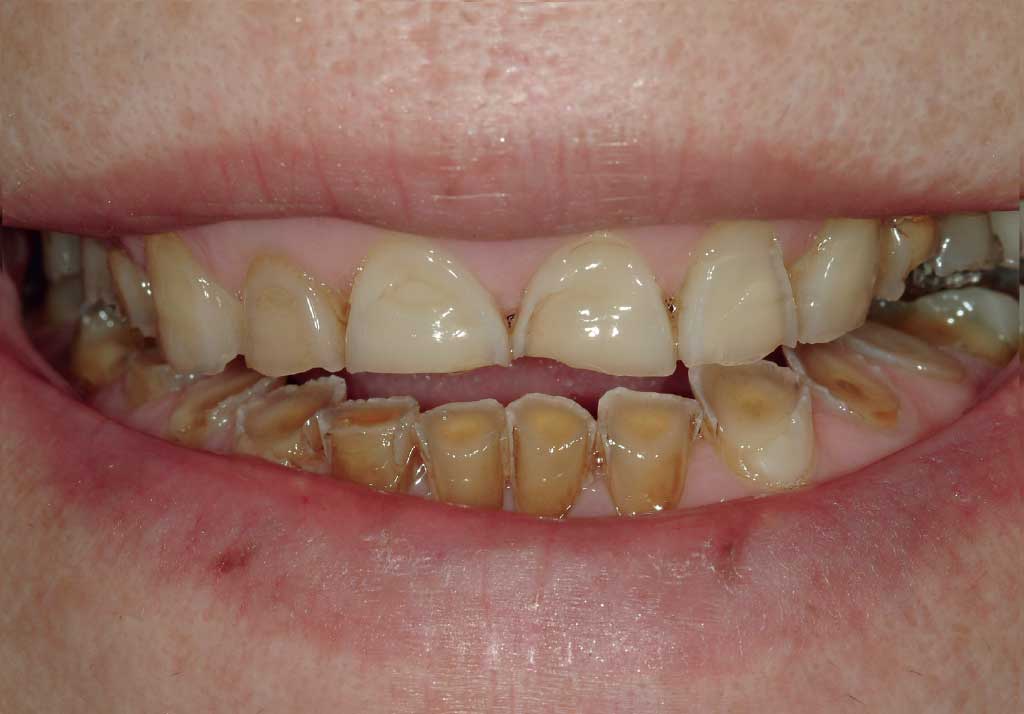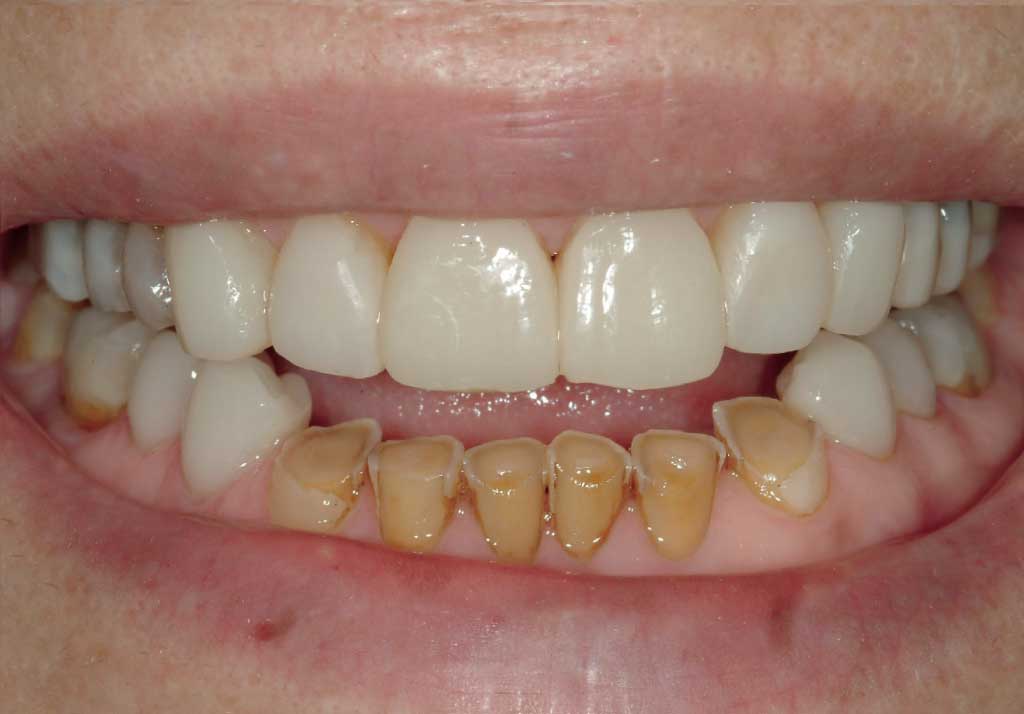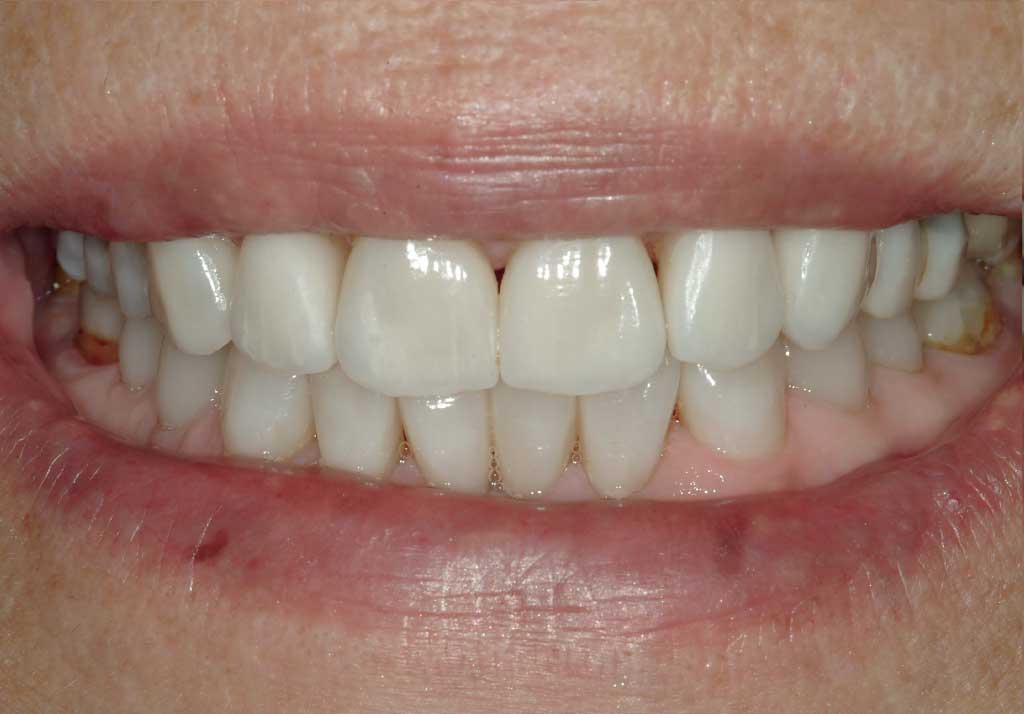The 3step
The 3step
A NON-invasive treatment pathway
I would never have my teeth filed, as I have another option available to me, namely an ADDITIVE, completely NON-invasive approach that adds instead of removing substance, and truly strengthens teeth while treating them.
In 2005, Additive Dentistry did not exist and I had to invent it. I called it the 3STEP method and I can say, after almost 20 years of experimentation on my patients, that this revolutionary approach works and works well to preserve mouth health over time. Yes, today it is possible to repair teeth without filing them any longer!
Here is how the clinical steps of the 3STEP method work:

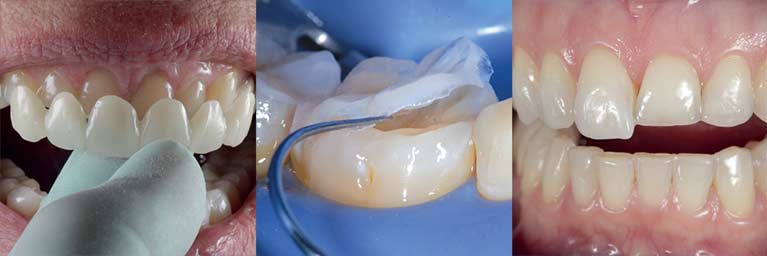
The first visit is a crucial time to understand the specific reasons for mouth degradation (diagnosis). Having found out the WHY, patients can then decide whether they want to know the HOW to deal with the problem assessing different treatment options.
To complete data acquisition, a further meeting, the mock-up visit, is necessary, where a simulation of the final result is presented to the patient.
Only then can the treatment plan be finalised and a customised cost estimate be defined.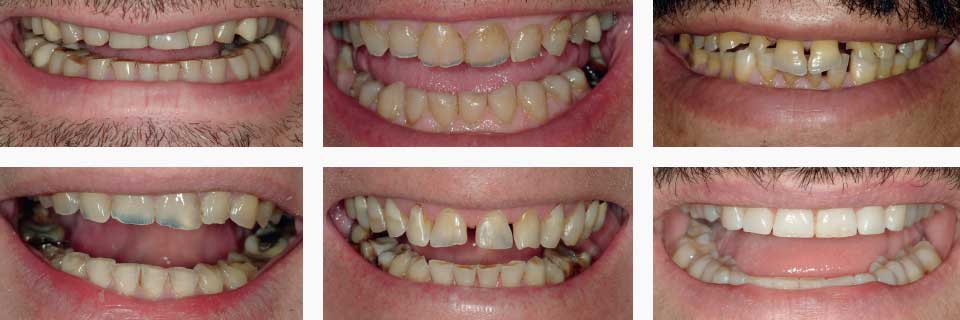


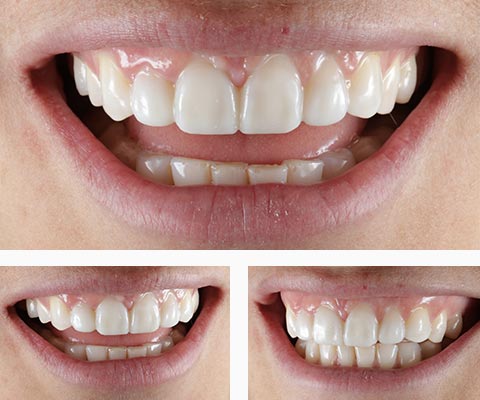 Before starting the additive treatment, an additional visit is scheduled to understand the patient's wishes regarding the aesthetic outcome of dental treatment (shape and colour of the restorations). A "MOCK-UP" is used, i.e. a 3D simulation of the final restorations fabricated directly in the mouth.
This technique can be compared to wearing a wig to visualise the final outcome before changing hair colour or cut.
Specifically, the shape of future restorations is provisionally transferred into the mouth to allow the patient to test the final aesthetic result, accepting it or proposing modifications. Taking advantage of this meeting, a detailed treatment plan is then finalised.
Before starting the additive treatment, an additional visit is scheduled to understand the patient's wishes regarding the aesthetic outcome of dental treatment (shape and colour of the restorations). A "MOCK-UP" is used, i.e. a 3D simulation of the final restorations fabricated directly in the mouth.
This technique can be compared to wearing a wig to visualise the final outcome before changing hair colour or cut.
Specifically, the shape of future restorations is provisionally transferred into the mouth to allow the patient to test the final aesthetic result, accepting it or proposing modifications. Taking advantage of this meeting, a detailed treatment plan is then finalised.

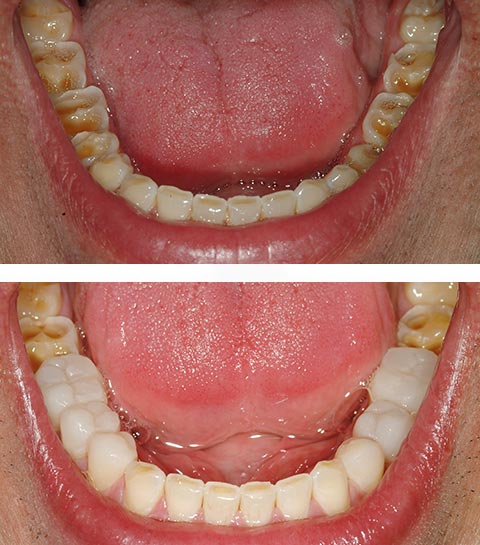
If, at the end of the mock-up examination, the patient wishes to continue with the 3STEP method, the focus in the next appointment will be on posterior teeth and the aim will be to change the patient's bite in order to stabilise occlusion.
Additive composite restorations will be fixed to the teeth, like new 'tyres'.
These thicknesses form the White Bite, so called because they separate the teeth like the bites used in cases of bruxism. The White Bite, however, has the shape and colour of teeth, and is not removable, so that the new chewing function can also be tested.
As a result, the White Bite not only reconstructs and protects the surfaces of damaged teeth but it makes space for restorations without having to file teeth, but it also allows for a better mandibular position.
Since these 'tyres' are placed without removing healthy dental substance, this treatment is performed without anaesthesia. To reiterate, this treatment is completely NON INVASIVE and therefore reversible.
One week after delivery of the White Bite, the patient returns for a follow-up visit. Also this visit is important because I check how the patient has reacted to the change in his or her mouth. There are patients who adapt immediately, others who need more time.
Since it is a re-education, it needs to be tailor-made to each patient.
Thanks to the completely non-invasive approach, it is always possible to return the patient to the baseline condition (treatment reversibility). This enables to propose rehabilitation guided primarily by neuromuscular responses and by the well-being of patients.
In this follow-up visit, the contacts between teeth that have received the 'tyres' are fine-tuned and the anterior teeth are cleaned so as to be ready to receive Anterior Veneers at the next visit.
Anterior teeth are often the first clue for patients that something is wrong in their mouth as their incisal edges become more irregular, thinner or shorter. This accelerated wear requires immediate repair which can only occur now as, thanks to the 'tyres' of the White Bite, the dental arches have been separated and an anterior space has been created to deliver anterior restorations without filing teeth.
The 3STEP method involves Anterior Veneers, aesthetic, biological, functional and, above all, non-invasive restorations. In fact, the treatment must first and foremost aim to preserve all that remains of teeth already compromised by wear, erosion, trauma, to strengthen them and to improve smile esthetics.
During this appointment, 6 Anterior Veneers are bonded onto teeth. It is crucial that their presence does not impair the chewing function especially in dysfunctional patients (e.g. bruxists). With this session the 3STEP method comes to an end.
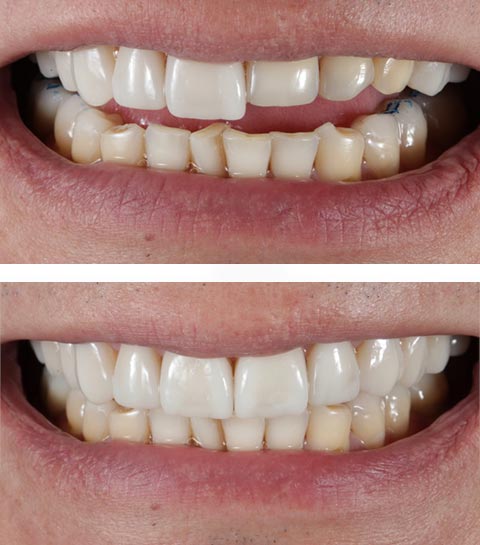

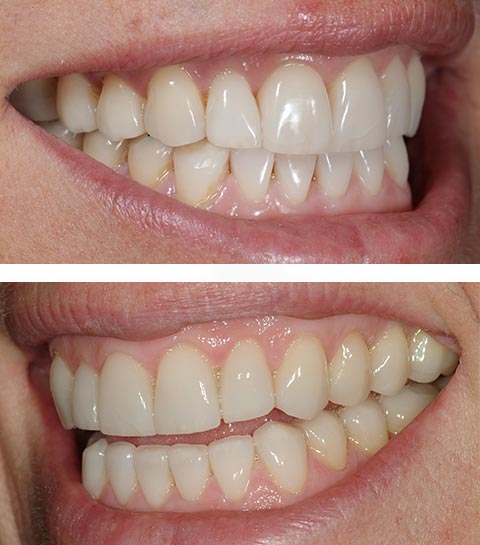 In less compromised cases, the 3STEP method may be the only treatment needed to complete oral care. In other patients, on the other hand, the 3STEP is only the first treatment step to allow aesthetic and functional stabilisation in a very short time, even recycling incongruous crowns, bridges and restorations. In these patients, the White Bite is a provisional that must then be replaced. This is called Posterior Upgrade and consists in removing the White Bite, together with initial caries and incongruous pre-existing restorations, to deliver final restorations. The timing of these Upgrades must be decided with the patient and is based on several factors, including the urgency to remove caries, the patients' financial availability, and their schedule.
In less compromised cases, the 3STEP method may be the only treatment needed to complete oral care. In other patients, on the other hand, the 3STEP is only the first treatment step to allow aesthetic and functional stabilisation in a very short time, even recycling incongruous crowns, bridges and restorations. In these patients, the White Bite is a provisional that must then be replaced. This is called Posterior Upgrade and consists in removing the White Bite, together with initial caries and incongruous pre-existing restorations, to deliver final restorations. The timing of these Upgrades must be decided with the patient and is based on several factors, including the urgency to remove caries, the patients' financial availability, and their schedule.
The first visit is a crucial time to understand the specific reasons for mouth degradation (diagnosis). Having found out the WHY, patients can then decide whether they want to know the HOW to deal with the problem assessing different treatment options.
To complete data acquisition, a further meeting, the mock-up visit, is necessary, where a simulation of the final result is presented to the patient.
Only then can the treatment plan be finalised and a customised cost estimate be defined.


 Before starting the additive treatment, an additional visit is scheduled to understand the patient's wishes regarding the aesthetic outcome of dental treatment (shape and colour of the restorations). A "MOCK-UP" is used, i.e. a 3D simulation of the final restorations fabricated directly in the mouth.
This technique can be compared to wearing a wig to visualise the final outcome before changing hair colour or cut.
Specifically, the shape of future restorations is provisionally transferred into the mouth to allow the patient to test the final aesthetic result, accepting it or proposing modifications. Taking advantage of this meeting, a detailed treatment plan is then finalised.
Before starting the additive treatment, an additional visit is scheduled to understand the patient's wishes regarding the aesthetic outcome of dental treatment (shape and colour of the restorations). A "MOCK-UP" is used, i.e. a 3D simulation of the final restorations fabricated directly in the mouth.
This technique can be compared to wearing a wig to visualise the final outcome before changing hair colour or cut.
Specifically, the shape of future restorations is provisionally transferred into the mouth to allow the patient to test the final aesthetic result, accepting it or proposing modifications. Taking advantage of this meeting, a detailed treatment plan is then finalised.

 If, at the end of the mock-up examination, the patient wishes to continue with the 3STEP method, the focus in the next appointment will be on posterior teeth and the aim will be to change the patient's bite in order to stabilise occlusion.
Additive composite restorations will be fixed to the teeth, like new 'tyres'.
These thicknesses form the WHITE BITE, so called because they separate the teeth like the bites used in cases of bruxism. The White Bite, however, has the shape and colour of teeth, and is not removable, so that the new chewing function can also be tested.
As a result, the White Bite not only reconstructs and protects the surfaces of damaged teeth separating the dental arches to make space for restorations without having to file teeth, but it also allows for a better mandibular position.
Since these 'tyres' are placed without removing healthy dental substance, this treatment is performed without anaesthesia. To reiterate, this treatment is completely NON INVASIVE and therefore reversible.
If, at the end of the mock-up examination, the patient wishes to continue with the 3STEP method, the focus in the next appointment will be on posterior teeth and the aim will be to change the patient's bite in order to stabilise occlusion.
Additive composite restorations will be fixed to the teeth, like new 'tyres'.
These thicknesses form the WHITE BITE, so called because they separate the teeth like the bites used in cases of bruxism. The White Bite, however, has the shape and colour of teeth, and is not removable, so that the new chewing function can also be tested.
As a result, the White Bite not only reconstructs and protects the surfaces of damaged teeth separating the dental arches to make space for restorations without having to file teeth, but it also allows for a better mandibular position.
Since these 'tyres' are placed without removing healthy dental substance, this treatment is performed without anaesthesia. To reiterate, this treatment is completely NON INVASIVE and therefore reversible.



 In less compromised cases, the 3STEP method may be the only treatment needed to complete oral care. In other patients, on the other hand, the 3STEP is only the first treatment step to allow aesthetic and functional stabilisation in a very short time, even recycling incongruous crowns, bridges and restorations. In these patients, the White Bite is a provisional that must then be replaced. This is called Posterior Upgrade and consists in removing the White Bite, together with initial caries and incongruous pre-existing restorations, to deliver final restorations. The timing of these Upgrades must be decided with the patient and is based on several factors, including the urgency to remove caries, the patients' financial availability, and their schedule.
In less compromised cases, the 3STEP method may be the only treatment needed to complete oral care. In other patients, on the other hand, the 3STEP is only the first treatment step to allow aesthetic and functional stabilisation in a very short time, even recycling incongruous crowns, bridges and restorations. In these patients, the White Bite is a provisional that must then be replaced. This is called Posterior Upgrade and consists in removing the White Bite, together with initial caries and incongruous pre-existing restorations, to deliver final restorations. The timing of these Upgrades must be decided with the patient and is based on several factors, including the urgency to remove caries, the patients' financial availability, and their schedule.
